

"The Three Ravens" (Child 26, Roud 5) is an English folk ballad, printed in the song book Melismata compiled by Thomas Ravenscroft and published in 1611, but it is perhaps older than that. Newer versions (with different music) were recorded right up through the 19th century. Francis James Child recorded several versions in his Child Ballads (catalogued as number 26). A Scots language ballad called "Twa Corbies" ("Two Ravens" or "Two Crows") has lyrics based on "The Three Ravens" with a similar general story, but with a darker twist. Twa Corbies is sung to a different melody.
The ballad takes the form of three scavenger birds conversing about where and what they should eat. One tells of a newly slain knight, but they find he is guarded by his loyal hawks and hounds. Furthermore, a "fallow doe", an obvious metaphor for the knight's pregnant ("as great with young as she might go") lover or mistress (see "leman") comes to his body, kisses his wounds, bears him away, and buries him, leaving the ravens without a meal. The narrative ends with "God send euery gentleman / Such haukes, such hounds, and such a Leman".
The lyrics to "The Three Ravens" are here transcribed using 1611 orthography. They can be sung either straight through in stanzas of four lines each, or in stanzas of two lines each repeating the first line three times depending on how long the performer would like the ballad to last. The second method appears to be the more canonical, so that is what is illustrated below. The refrains are sung in all stanzas, but they will only be shown for the first.
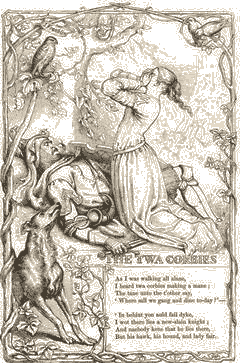
Written heavily in the Scots language, "The Twa Corbies" probably dates from the 18th century and was first published in Walter Scott's Minstrelsy in 1812. Child (I, 253) quotes a letter from Charles Kirkpatrick Sharpe to Walter Scott (August 8, 1802): "The song of 'The Twa Corbies' was given to me by Miss Erskine of Alva (now Mrs Kerr), who, I think, said that she had written it down from the recitation of an old woman at Alva."

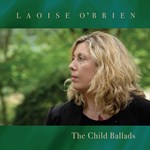
It has a more dark and cynical tone than the Three Ravens, from which its lyrics were clearly derived. There are only two scavengers in “The Twa Corbies”, but this is the least of the differences between the songs, though they do begin the same. Rather than commenting on the loyalty of the knight's beasts, the corbies tell that the hawk and the hound have forsaken their master, and are off chasing other game, while his mistress has already taken another lover. The ravens are therefore given an undisturbed meal, as nobody else knows where the man lies, or even that he is dead. They talk in gruesome detail about the meal they will make of him, plucking out his eyes and using his hair for their nests. Some themes believed to be portrayed in "Twa Corbies" are: the fragility of life, the idea life goes on after death, and a more pessimistic viewpoint on life. The loneliness and despair of the song are summed up in the final couplets;
There are a few different versions of this anonymously authored poem. The full text of at least one version of the poem is as follows:
This ballad was one of 25 traditional works included in Ballads Weird and Wonderful (1912) and illustrated by Vernon Hill.


"The Three Ravens" or "Twa Corbies" have been performed and recorded by artists such as Heather Alexander, Annwn, A Chorus of Two, Ayreheart, Damh the Bard, Bishi, Boiled in Lead, Scott Boswell, Djazia Satour, Cécile Corbel, Clam Chowder, The Corries, Crooked Mouth, Alfred Deller, The Duplets, Frances Faye, Richard Dyer-Bennet, Fiddler's Dram, Ray & Archie Fisher, John Fleagle and Ewan MacColl, John Harle, The Hare and The Moon, Peter, Paul and Mary, Bert Jansch, Joel Cohen, Kalin Sivov, Andrew King, Mandala Folk, Marie Little, Malinky, Old Blind Dogs, Omnia, Kate Price, Schelmish, Sol Invictus, Sonne Hagal, Sequester, Steeleye Span, Andreas Scholl, Hamish Imlach, Libera (choir), Richard Thompson, Ariella Uliano, Diana Obscura, Terre di mezzo, Kenneth McKellar, Custer LaRue and The Baltimore Consort, Merry Wives of Windsor, Sportive Tricks, The Creepy Bard, The Sands Family, Alice Moving Under Skies, Astral Weeks, Winterfylleth and Faun. The album Farewell Aldebaran contains a song clearly based on Three Ravens but the lyric credits go to Judy Henske, music by Jerry Yester.
Both "The Three Ravens" and "Twa Corbies" have been translated to other languages, typically all sung to the same melody as Twa Corbies, or that of the Breton song called An Alarc'h (The Swan).
Known versions include:
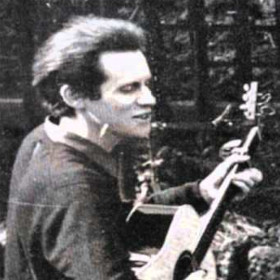
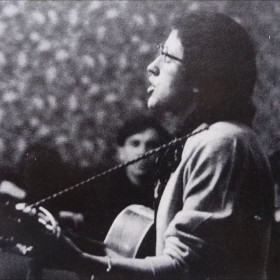
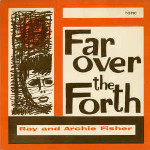 Ray and Archie Fisher sang Twa Corbies on the EP Far Over the Forth (1962):
»When is a ballad not a ballad? Answer—when it isn't sung. The Twa Corbies has for long been regarded as one of the most flawless as it is one of the grimmest of all our ballads; but it wasn't being sung. No tune appeared to survive in oral tradition and attempts at setting it remained literary, academic and dead. Then R.M. Blythman (the Scots poet “Thurso Berwick”) set it [in ca 1956] to this marvellously sombre old Breton tune, An Alarc'h, The Swan, learned from the Breton folk-singer Zaig Montjarret. The result was astonishingly right and The Twa Corbies has passed into the repertoire of our younger folk-singers. It is related to the English Three Ravens.«
This recording was included on the compilation (New) Electric Muse (1975/1996): »'The Twa Corbies', number 26 in Child's collection, was set by Ray and Archie to a Breton folk tune, 'An Alarch' (The Swan) learnt from Zaig Montjarret and later popularised by the Breton celtic harp-player Alan Stivell. It was one of the first in which a transatlantic-based rhythm was married to a traditional British text. The song is related, through a different version, to the Corpus Christi Carol, or 'Down in Yon Forest'. Pushkin reworked the first three verses into Russian.« |
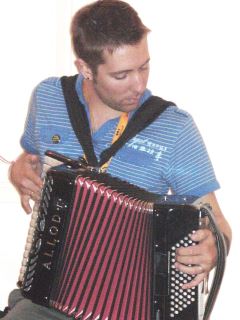
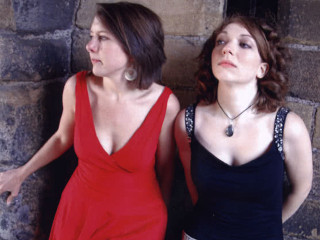
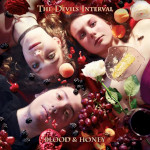 The Devil's Interval (Lauren McCormick, Emily Portman & Jim Causley) sang Two Crows on Blood and Honey (2006):
»Harry Adams sang The Three Crows to Bob and Jacqueline Paton in 1977 calling it “an old pub song”. Some people think it is related to the ancient ballad The Three Ravens but in our scholarly opinions we feel the connection is highly dubious! Emily folked it up a bit, added some lines and lost a crow along the way.«
|
  Jean Redpath sang Twa Corbies on her Scottish Ballad Book (1962):
»Proof that not all of the “big ballads” are big in both form and feeling, Twa Corbies owes much of the power of its impact to its very brevity. In contrast to the more hopeful Three Ravens—that form of the ballad which is more widely known—this version presents in five compact stanzas its hard and cynical comment and captures the very spirit of the Anglo-Saxon fatalism, especially in the terrible finality of the last two lines. In this form the ballad is rare in Britain, has no European analogies and is practically unknown in Canada. The popularity of The Three Ravens and its variants in America has been attributed to minstrel stage burlesque. Since it is difficult to explain how such apparently restricted oral tradition has resulted in such a perfect and unique poem, it has been suggested that Twa Corbies is in fact a formal composition, perhaps from the pen of Motherwell. Whatever its origin, this ballad, start and desolate as it is, remains one of the most arresting I know.«
|
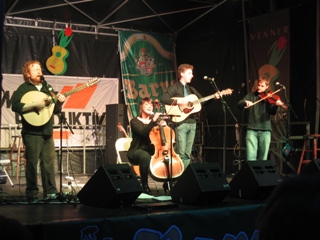
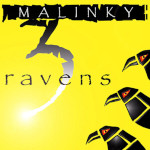 Malinky recorded Three Ravens as the title track of their second album, 3 Ravens (2002):
»Karine [Polwart] first heard this sung by Susan Thores. It's related to the much better known ballad The Twa Corbies. Our arrangement takes its inspiration from the brilliant Breton band Skolvan.«
|
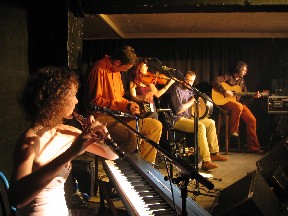 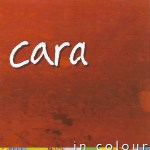 Cara recorded Three Ravens / Ravin' in the Bathroom on In Colour (2004) and In Full Swing (2007):
»Gudrun [Walther] discovered this song on Malinky's CD Three Ravens. These cite Susan Thores as the source. The song is related to the Scottish ballad Twa Corbies,
which can be found in several variations in the Child ballad collection. Claus [Steinort] composed the tune Ravin' in the Bathroom one morning while drying his hair.«
|


Lyrics (© Mainly Norfolk): The Three Ravens, Twa Corbies / Two Ravens |
  Steeleye Span, Hark! The Village Wait (1970):
»... otherwise known as the Two Ravens, and sometimes called The Three Ravens. First printed in [Scott's] Minstrelsy of the Scottish Border in 1803 it is one of the most popular of the Scottish ballads. For those unused to the dialect the two birds are discussing the pros and cons of eating a newly slain knight. Ashley Hutchings: “This goes back to the 13th Century at least, and it was recorded at Tim's suggestion.” Why is it particular about a knight? Why not a footsoldier? “Songs that go back a long way are usually about Lords and Ladies, possibly because they were a great source of interest to the people, rich and poor.”«
Maddy Prior, Year (1993): »Reflection on death in its physical reality is known to the Buddhists and Hindus, but in the West only in Medieval times was it dealt with directly and evoked by skeletons carved on graves and gruesome images of Death the Reaper. In these more antiseptic times there is little in this line and flowers, wreaths and gentle doves cloud the unacceptable thought of our mortal destination. This song dates from earlier times and is for me a brilliant examination of decay. [R.M. Blythman] set the stark old Scottish words to this moody Breton tune and we have amplified its Gothic atmosphere. ‘Corbies’ means ‘carrion crows’ and ‘hause bane’ is a ‘breast bone’.« 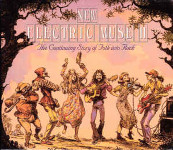 |
Incidentally, a German folk band called Hoodie Crows recorded just another Child ballad, Lord Ronald.
Let us also revisit two strange tales from Steeleye Span's 2019 album, Est'd 1969 (The Boy and the Mantle, The Laily Worm and the Mackerel of the Sea)
and former Span fiddler Peter Knight's 2020 album with the Gigspanner Big Band (Betsy Bell and Mary Gray, Earl Brand).
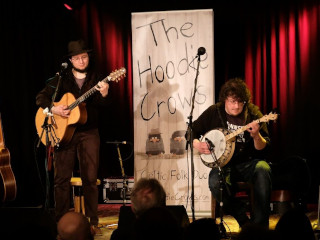

Listen to Lord Randall from: Cara", Cara (Live), Lynched, Vicki Swan & Jonny Dyer
Watch Lord Randall from: Cara, Martin Carthy, Dick Gaughan, Joe Heaney, Lankum, Ewan MacColl, Reg Meuross, Alasdair Roberts , Swan & Dyer, Lucy Ward Lord Randall (© Mainly Norfolk)
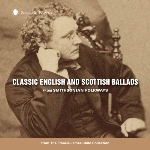
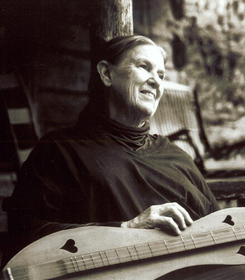
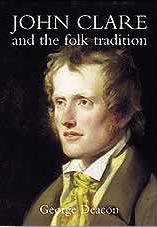
"Lord Randall", or "Lord Randal", (Roud 10, Child 12) is an Anglo-Scottish border ballad consisting of dialogue between a young Lord and his mother. Similar ballads can be found across Europe in many languages, including Danish, German, Magyar, Irish, Swedish, and Wendish. Italian variants are usually titled "L'avvelenato" ("The Poisoned Man") or "Il testamento dell'avvelenato" ("The Poisoned Man's Will"), the earliest known version being a 1629 setting by Camillo il Bianchino, in Verona.
Lord Randall returns home to his mother after visiting his lover. Through the mother's inquiry, it is gradually revealed that the Lord has been poisoned by his lover, who has fed him poisoned eels. In some variants, Lord Randall dictates his last will and testament after realizing he has been poisoned. His lover's motive for poisoning him is never discussed.
In 1962, Bob Dylan modeled his song "A Hard Rain's A-Gonna Fall" on "Lord Randall", introducing each verse with variants of the introductory lines to each verse of "Lord Randall". Dylan's ballad is often interpreted as a reaction to the Cuban Missile Crisis. Dylan himself disclaimed this as an oversimplification, and in reality, Dylan first publicly performed the song a month before the crisis.

Lord Randall and John Blunt must be among the more widespread story-ideas in the folk consciousness, the stories remaining more or less the same and varying according to locale and-or the individual imagination of whoever sings them. […] I have to thank Phil and Sid of Edinburgh for the original idea which led me recasting the tune sung to Lord Randall, known as My Wee Croodlin' Doo. – Martin Carthy Child Ballad #12. Thought to be one of the oldest traditional ballads of England, it might be about Randolph, 6th Earl of Chester, who died in 1232. A young lord is poisoned by his ‘love’. In the song he bequeaths his estate to his family and justice to his poisoner. – Vicki Swan and Jonny Dyer |
"The Boy and the Mantle" is Child ballad number 29, an Arthurian story. Unlike the ballads before it, and like "King Arthur and King Cornwall" and "The Marriage of Sir Gawain" immediately after it in the collection, this is not a folk ballad but a song from professional minstrels.
A boy comes to King Arthur's court with an enchanted mantle that can not be worn by an unfaithful wife. Guinevere dons it, and so does every other lady in the court; only one can wear it, and only after she confesses to kissing her husband before their marriage. Other boys also bring a wild boar, that can not be cut by a cuckold's knife, and a cup that a cuckold can not drink from without spilling it, and these also reveal that every wife at court has been unfaithful.
The magical test of fidelity which virtually every woman fails is a common motif, being found first in fabliau and romances, such as The Faerie Queene, where Florimel's girdle fits the pattern, and Amadis of Gaul, where no one unfaithful to his or her first love can pass an archway.
 An Arthurian tale where, whilst in Carlisle (he wasn’t always in Cornwall!), a boy happens along with the means to test the court as to whether they are faithful to their spouses or not. The three tests are for the ladies to don the “Mantle Veritas” with embarrassing results if they’re not constant and true, and the men to try to cut into a boar's head or to drink from a magic horn successfully. Sometimes the latter two tests were to determine whether a man was a cuckold or not, but Maddy and I decided that all the tests would be for fidelity. The chorus and the main instrumental theme were written by us and developed in rehearsal but the verse melody is traditional. We were fortunate to have the addition of the eminent harpsichordist Sophie Yates, which puts us beautifully in a ‘court-like’ place even though there weren’t any harpsichords at that time! (Mind you, there weren’t any electric guitars either!) – Steeleye Span |
"The Laily Worm and the Machrel of the Sea" is Child ballad number 36.
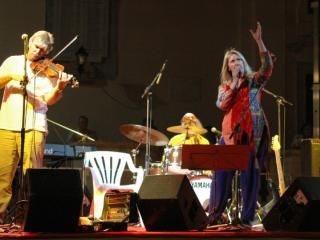

Watch The Boy and the Mantle from: Steeleye Span The Boy and the Mantle (© Mainly Norfolk)
Watch The Laily Worm from: Rachel McDonough The Laily Worm (© Mainly Norfolk)
Watch Betsy Bell and Mary Gray from: All Souls Night Betsy Bell and Mary Gray (© Mainly Norfolk)
Watch Earl Brand from: Gigspanner Big Band Earl Brand (© Mainly Norfolk)

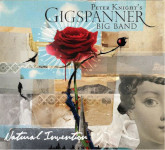
A young man, transformed into a laily (loathly, or loathsome) worm, tells his story: his father married an evil woman as his stepmother, and she transformed him into a worm and his sister into a mackerel. His sister combed his hair every Saturday. He has killed seven knights, and if the man he was speaking to was not his father, he would be the eighth. His father sends for the stepmother, who claims his children are at court. He makes her use her silver wand to turn his son back, and then her magic horn to summon the fish, although the daughter holds back rather than let the stepmother transform her again. The father burns the stepmother at the stake.
This ballad has motifs in common with "The Laidly Worm of Spindleston Heugh", "Kemp Owyne", and more with "Allison Gross", but is an independent one, and a traditional one, unretouched by literary forms. The sister can comb the hair in "Allison Gross" because she still has her human form; Francis James Child believed that part of the original tale has been lost, in which she could assume her human form again for part of the week. The horn has a logical plot function in this tale, unlike "Allison Gross". It is psychologically sound that the fish wishes to avoid her stepmother, but that plot twist leaves her still a fish; Child believed that, here, also, part of the tale was lost.
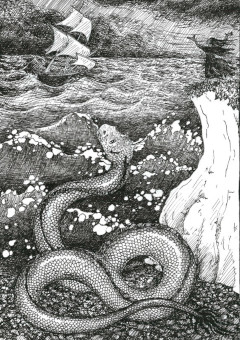 This is Child Ballad 36, a song which he describes as “mutilated and defaced”, but pure tradition. Much reading of ballads makes you fill in, mentally, missing parts, but here we’ve attempted to make the story clearer, and in our usual way put tunes to it of our own devising. Worms, serpents and dragons are sometimes interchangeable and there are many stories from around the world where characters are shape shifted into these loathsome creatures. Alison Gross, another ballad we have sung, takes revenge on a lover’s rejection by turning him into a worm, but she also has the ability to change him back again and the similarity will be why Child has placed these ballads next to each other in his collection. But ballads, like fairy tales, are not driven by the need for happy endings and, if they intend to teach about life, then ballad similarities may be suggesting options of different outcomes. – Steeleye Span |
Bessy Bell and Mary Gray are "twa bonnie lassies", the subject of one of the Child Ballads. According to the ballad, Bessy and Mary were daughters of two Perthshire gentlemen, who in 1666 built themselves a bower to avoid catching a devastating plague. The girls were supplied with food by a lad in love with both of them; the lad caught the plague and gave it to them, and all three sickened and died.
Two similar hills near Omagh, County Tyrone (Northern Ireland) were named after Bessy Bell and Mary Gray by Scottish immigrants who went to Ireland to make their passage to America. Sliabh Troim ('mountain of elder') is the original Irish name of Bessy Bell, also recorded as Sliab Toad. There also exist twin hills in Staunton, Virginia which were named after the girls by Scottish immigrants. Two adjacent volcanic cones in the Auckland volcanic field, New Zealand, (Otara Hill and Green Hill) were referred to by 19th-century European settlers as Bessy Bell and Mary Gray (See 1859 map).
 The most interesting aspect of this traditional song is what it doesn’t reveal. Based on fact, Betsy’s and Mary’s endeavour to escape the plague by building a remote bower was undone by the arrival of a lover bearing food and gifts, and subsequently the plague, which was believed to have been carried on a necklace taken from a victim. – Gigspanner Big Band |
"Earl Brand" (Child 7, Roud 23) is a pseudo-historical English ballad. The hero, who may be Earl Brand, Lord Douglas, or Lord William, flees with the heroine, who may be Lady Margaret. A Carl Hood may betray them to her father, but they are always pursued. The hero kills the pursuers and is mortally wounded. He gets the heroine to his mother's house, but when he dies, she dies of sorrow.
This ballad has many similarities with Child ballad 8, Erlinton, where the lovers succeed in their escape, and the fight scenes often have details in common across variants. Francis James Child only reluctantly separated them, but concluded that because the lovers' assailants are her kin in Earl Brand and strangers in Erlinton, they were separate types.
Scandavian variants often have a detail that Child believed was originally contained but lost from the English ballad: the hero warns the heroine not to speak his name, and when he is about to kill her last brother, she begs him by name to let the brother live to bear the news, and this causes his death. These variants include the Danish Ribold and Guldborg and Hildebrand and Hilde and the German Waltharius and Þiðrekssaga. Auld Carl Hood is also an old man in the Scandavian variants; he appears to be a malicious figure of Odin or Woden.
Many variants of this ballad end with flowers growing from the lovers' grave. This is a common motif for all manner of ballads having no other connection, such as Fair Margaret and Sweet William, Lord Thomas and Fair Annet, Fair Janet, and Lord Lovel, and in tales and ballads found throughout Europe and parts of Asia. This is found in the legend of Tristan and Iseult, which is sometimes supposed to be the source, but there is no evidence for its being older in the romances than in the ballad. Frederick William Burton drew upon a Danish ballad of this type for his "Meeting on the Turret Stairs", depicting the parting of the lovers before the fight.

Another discovery from Cecil Sharp’s Appalachian collection. A beautiful tune, but a tragic story. However, we take the image of the rose and the briar to symbolise love conquering all in the end. – Gigspanner Big Band |

Text is available under the Creative Commons Attribution-ShareAlike License.
Date: January 2021.
Photo Credits:
(1) "The Three Ravens",
(2) "Twa Corbies",
(3) Laoise O'Brien,
(4) Ewan MacColl,
(5) Archie Fisher,
(6) Ray Fisher,
(7) Jim Causley,
(8) Lauren McCormick &
Emily Portman,
(9) Jean Redpath,
(12) Maddy Prior,
(15) Hoodie Crows,
(16) Jean Ritchie,
(18) "The Boy and the Mantle",
(19) Steeleye Span,
(20) "The Laily Worm and the Machrel of the Sea",
(21) Peter Knight's Gigspanner Big Band,
(22) "Bessy Bell and Mary Gray",
(23) "Earl Brand",
(unknown/website);
(10) Malinky,
(11) Cara
(by Walkin' Tom);
(13) "The Three Ravens",
(14) "Twa Corbies",
(17) "Lord Randall",
(by ABC Notations).